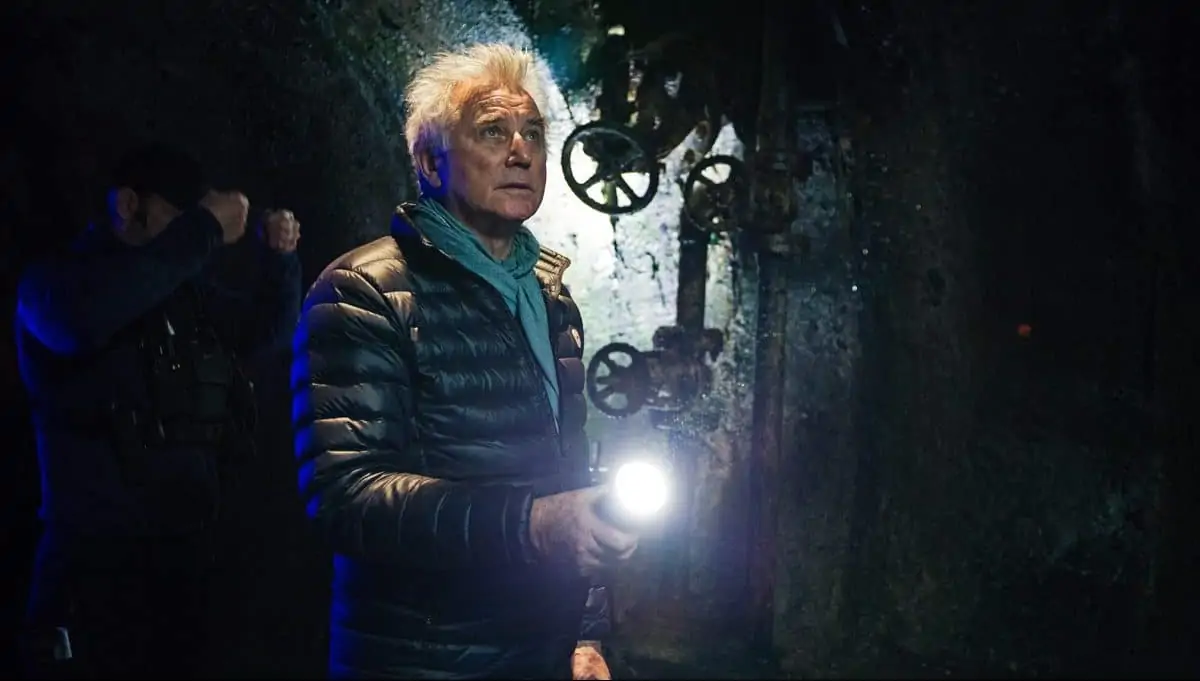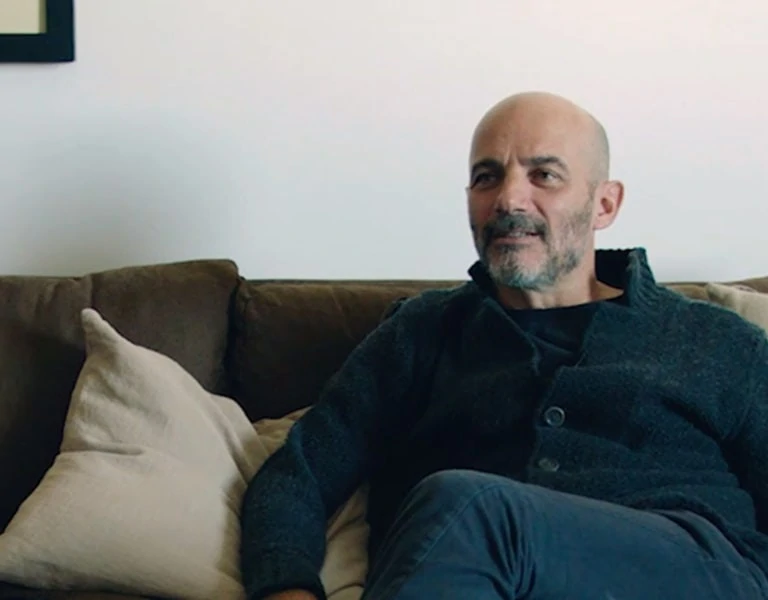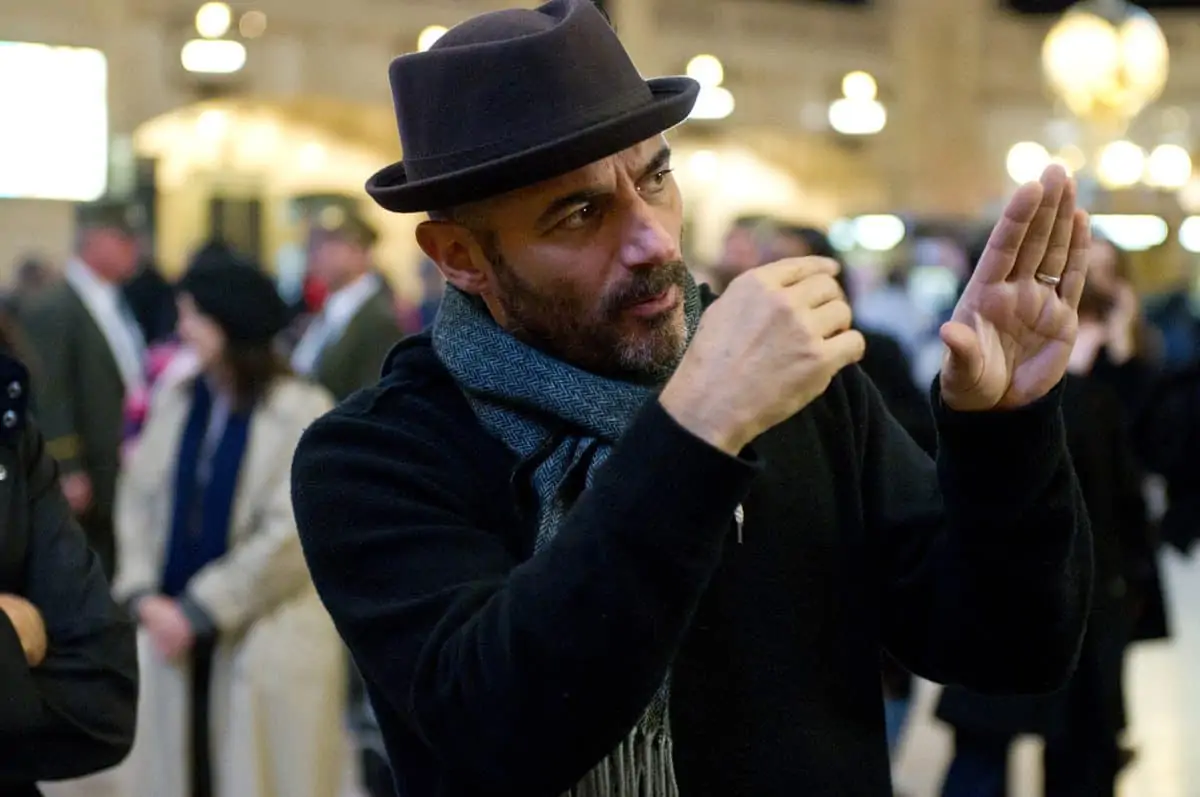Monkey Business
Michael Seresin BSC / Dawn of the Planet of the Apes

Monkey Business
Michael Seresin BSC / Dawn of the Planet of the Apes
BY: Adrian Pennington
2011's Rise Of The Planet Of The Apes rekindled the classic science-fiction film series, begun by director Franklin J. Schaffner in 1968, with storytelling in keeping with the universe of the original four films combined with modern character creation techniques. When it proved to be a solid hit among audiences internationally, the inevitable sequel was put into production by franchise holder 20th Century Fox, writes Adrian Pennington.
Dawn Of The Planet Of The Apes is the highly-anticipated summer tent pole for the studio and one entrusted to capable hands. When Rise director Rupert Wyatt announced his intention to depart from the follow-up, in stepped Matt Reeves (Cloverfield) who surrounded himself with some serious filmmaking firepower in the shape of two editors (William Hoy ACE - with VFX grounding on 300, Watchmen, and I, Robot - and Stan Salfas ACE) and cinematographer Michael Seresin BSC, hot from the most eye-popping picture of recent times, the multi-award winning Gravity.
Seresin's work on Gravity flew a little under the radar, with Emmanuel 'Chivo' Lubezki AMC ASC taking cinematography credit and the Academy Award, but Seresin's role in shaping the hugely complex CGI-intensive story did not go unnoticed.
“I took over on Gravity for a few days toward the end, after Chivo had set it up,” explains Seresin. “Alfonso (Cuarón), is a friend (Seresin lensed Harry Potter And The Prisoner Of Azkaban for the director), and although I only met Chivo once socially I felt I knew his work by osmosis. He has a very intelligent eye. But comparing Gravity with Apes is very difficult. In Gravity you have two actors for the most part in space, or in a space capsule, and the light had to be from the sun, moon, stars, reflected light or reflections from instruments in the capsule – all virtual lights. Apes uses largely natural light shot on location.”
There are other key differences too. Gravity was post-converted to 3D. Apes is a native 3D picture. And whilst Apes contains over 1,000 VFX shots, the lead apes were not modelled in a computer, but motion-captured on location and “lit as if are they were actors, without overly melodramatic lighting, so there’s a real sense that they exist,” explains Seresin.
Indeed, with more performance-capture sequences in exterior locations than has ever been achieved before, Dawn Of The Planet Of The Apes is a first-of-its-kind.

Dark references
Seresin was the only choice for Reeves, who appreciated both the experience and filming aesthetic the cinematographer would bring to the sequel. He sent Seresin over 100 images and clips representing the type of look he envisaged for the project, including films Seresin had shot for Harold Becker, Cuarón and Alan Parker.
“His selected scenes tended to be dark, moody or dramatic from Angel Heart and Angela’s Ashes, a couple from City Hall, where the audience would see part of what is going on but some of the image is almost open to interpretation,” describes Seresin. “He also referenced paintings from the Dutch and Flemish schools, including still lives. The deeper into shadows you looked the more information you'd retrieve. The conversations we had at this stage [winter 2012] were around preferences for single source light, underlit, low key. I like the dark side of images and to a degree the dark side of life as well, so that aesthetic choice suited me fine. I also think Matt wanted someone with experience of large budget visual effects driven cinematography.”
In an ideal world – a world without the perception that negative is uneconomic or passé – both Reeves and Seresin would have shot film for this piece almost on principal. However, when the studio insisted on digital, Seresin ran tests on several cameras in search of the one that would give him the best chance of attaining Reeves' dark vision.
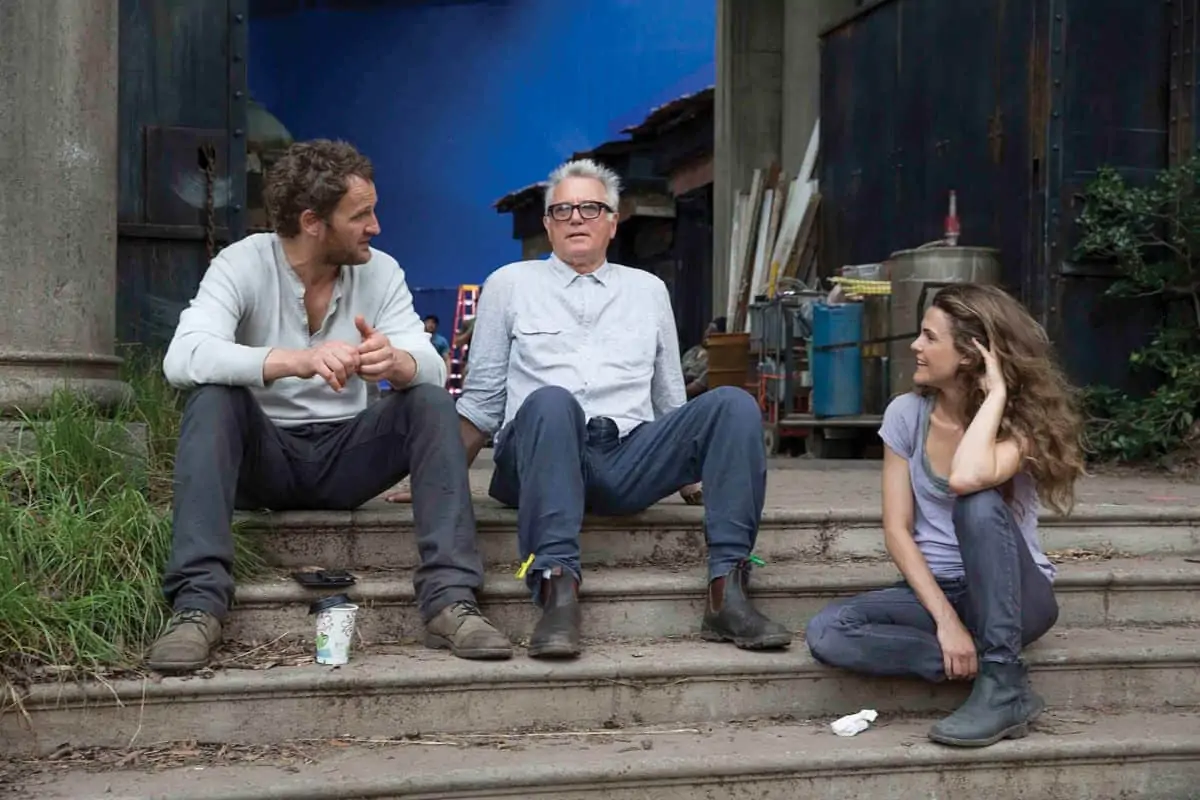
Leica lens choice
“Shooting film wasn't practical for various reasons, but I knew from talking with DPs who had resisted digital, but then done it, that they loved the film quality of the ARRI Alexa,” says Seresin, who also looked at the offerings from RED. “I'd have liked another six weeks of tests, but for me the prime consideration is always the glass in front of the camera. Whether it’s 16, 35, 65mm or digital, the means by which information is transferred to the audience is the lens.”
A connoisseur of Leica glass for features and stills photography, Seresin explains he sought out Leica's Summilux range which, in 2012, had just launched for digital cinema. “The quality is beautiful, really beautiful,” he enthuses. However, finding the perfect set is all well and good, but when you're shooting native stereo 3D it's critical to use identical pairs.
“Imperative, I'd say,” confirms Seresin. “If you want to use 150mm lenses in 3D you can't have one half of the pair being 149.4mm. There weren't a lot of those particular lenses around, so it was a very time-consuming to select the right ones – although the technical guys (with 3Ality Digital and Fletcher Camera rental – now part of Cineverse) ran a thousand times more tests than me!”
Dawn Of The Planet Of The Apes picks up ten years after the conclusion of Rise, as Caesar (Andy Serkis) leads his growing band of apes into a new civilisation. Much of humanity has been killed off by the deadly virus that was unleashed and spread across the globe, but Caesar and his group encounter a small band of human survivors and attempt to create a truce between the two species.
To capture as much performance information for the post-produced motion-capture, the multi-camera plan for Apes required eight 3Ality rigs carrying 16 ARRI Alexa Ms with sixteen sets for both first and second unit. “We got the tolerances bang-on which is testament to German engineering,” says Seresin. “The best thing about them, apart from their uniform quality, is that each one is the same size, pretty much the same weight. So in terms of fitting into the rig, everything is almost purpose built for that.”
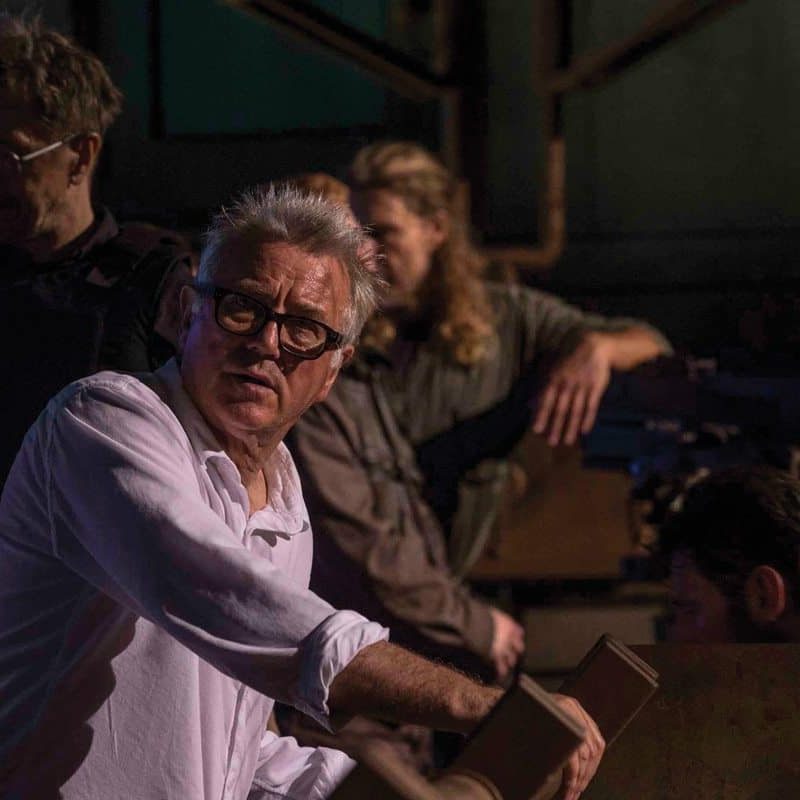
"You shoot everything together, then you take all the elements, separate them, film them separately, then it’s all put back together again."
- Michael Seresin BSC
Managing native 3D
With this being Reeves' and Seresin's debut native 3D picture it was a considerable logistical exercise trying to maintain a smooth schedule. The solution was to man two full crews on the first unit, working in leapfrog.
“The main issue with native 3D is that it is slow and the leapfrog principle saved a lot of time and effort,” says Seresin. “We were up in Vancouver where it is often raining and cold, not ideal for anything electronic, and it was taking a long time to set up, about 90 minutes between scenes. 3D probably adds about 30 percent more time to the day. While Rig One crew was setting up and then shooting, in tandem Rig Two and crew were working on the next set-up or shot. So Matt and I, and the rest of the crew, would move from set-up/shot one to the next shot without waiting too long for the mechanics of the whole process. I used a Canon EOS 7D as viewfinder, shooting video to see what was going to work and pass that information onto the second unit to make us more efficient.
“That said, however much you might be able to figure out in the abstract, once you watch what the actors are doing that’s what decides what you’re doing. Once you have the actors it’s like, 'You know what? We should be wide' or 'We should be closer.'”
Fox brought on board Jo Hagg as lead stereographer and Duck Grosberg as DIT with each camera given its own dedicated crew. Seresin devised a shorthand to communicate the scale of 3D that he and Reeves desired.
“Matt wanted a 2D aesthetic transferred to 3D,” says Seresin. “We decided on a shallow 3D for most scenes, but we had a scale from zero to five as a means of asking for more or less stereo. Joe would sit behind me and dial that in, shot to shot. We turned up the 3D with more depth to emphasise the battle scenes and, to accentuate that further, we kept the rest of the show subtle and low-key.”
As with all CGI-heavy native 3D films, Apes was rigorously storyboarded and pre-visualised, at times limiting spontaneity on set. “That made us work harder as a result,” says Seresin, who believes the results have a look and quality of spontaneity. In particular, he delights in improvising one of the few non-CGI scenes, featuring Gary Oldman.
“We thought it would be nice to move the camera in on him on a dolly and just go with his performance,” he says. “There's no greenscreen, no apes, just a powerful dramatic scene and boy was it incredible! Gary is standing at a window and picks up an iPad - which now works because electricity has been restored – he sees an image of his dead family. This image is what brings tears to his eyes. It was a simple, fixed wide shot, slowly tracked in, with close-ups for coverage.”
The Alexa data was recorded ARRIRAW onto Codex. FotoKem provided production dailies for viewing in stereo on 3D monitors.
“I'm the first to admit I'm not technical,” says Seresin. “We were surrounded by some really smart guys who took care of the digital files and the stereo on-set. There's no way I could do what a DIT or rig technician or stereographer does anymore than they could do what I do.”

On-set mocap workflow
Indeed, Seresin had many other demands on his time aside from the technical requirements of digital 3D. The story was being told as a complex interplay between live action 'human' characters and motion-captured simians with an additional layer of VFX shots created by Weta Digital in New Zealand, the house which had worked on Rise.
“For sure the process is quite laborious, because if you’re doing a sequence with apes, actor apes, background apes, and actors, you have to do everything three or four times,” he explains. “So you get it with everybody, then you get rid of the apes, then you get rid of the actors, and then you reshoot background plates, all with the same camera move so that the CG characters can be comp’d into the clean plate. And if you require greenscreen you do that too.”
“It’s like a big sandwich. You shoot everything together, then you take all the elements, separate them, film them separately, then it’s all put back together again.” Serkis and the other ape actors wore additional head-mounted cameras to capture facial expressions.
Dawn was filmed in the muddy rainforests of Vancouver while downtown New Orleans doubled for post-apocalypse San Francisco (in part because Louisiana offered an incentive for filming worth a base rate of 30%, in part because the local film commission was accommodating to street closures).
“The story takes place in San Francisco which is typically misty so for that reason, among others, we started in Vancouver where it rains even when it’s not raining and the light is soft, grey, wet,” reports Seresin. “Then we came down to New Orleans where you’ve got southern Louisiana light, its humid, tropical which gave us a massive amount of difficulty in diffusing the shots to keep the light quality consistent.”
Seresin visited Weta Digital in New Zealand last December to advise VFX supervisors Dan Lemmon and Erik Winquist (Weta chief Joe Letteri also visited the set and locations) and Weta artists on lighting issues. “Weta did a brilliant job matching the quality of light shot in principal photography with VFX,” he says. He also visited Company 3 in LA to oversee the digital intermediate grade.
“The reason I like film is that I know what I am getting. It's habit I dare say and it's becoming a cliché to say but film has an abstract quality. It's tactile, physical. If digital does the same thing then great, but I don't tend to like the look of most digital. Apes does look fabulous, I have no complaints. We looked into putting a film finish onto the completed film, but that doesn’t really work on 3D. Weta had done a serious amount of testing on other films and there were technical problems inherent in the process that precluded it working.”
He adds: “For me the content always defines the look. I’m not interested in something looking amazing if it’s not appropriate to the content.”

